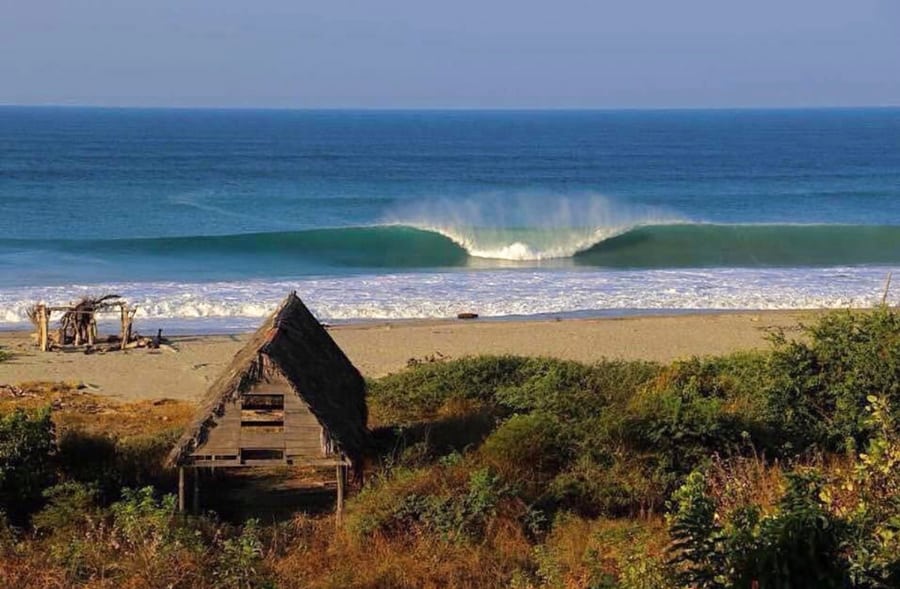
“Ohhhhhh, Mexico,” Jimmy Buffet once famously sang. “The sun’s so hot, I forgot to go home.”
In less than a dozen words, Buffet summed up many an expat’s Mexican experiences. And no wonder. Mexico is to the US what Indonesia is to Australia—a warm, cheap, exotic, adult’s equivalent of Disneyland, where you can get anything you want, whenever you want it. Oh, and the waves are epic too. Pretty much all of the time.
Mexico has a number of things going for it, as far as surf destinations go. For one, it’s located just above the equator, with a wide-open fetch facing north, west, and south. In other words, it is one of the most wave-rich countries on the planet, regardless of the month. South swells pump all summer, lighting up Mexico’s entire Pacific coast, from Oaxaca’s famed points and big wave beachies all the way up to the sandbars in Baja Norte.
But winter can be just as consistent, with northwest swells not only filtering into the points, reefs, and bombies in Baja, but also sending swell to the beach breaks down in Mainland Mexico. In other words, regardless of the type of wave you want to surf or the season you want to surf it in, you can find it in Mexico.

On top of that, the Mexican people are notoriously friendly, the food and culture are exquisite, the weather typically ranges from balmy to downright tropical, and the cost of living is a fraction of what you’d spend in US—even when camped out in Mexican tourist traps.
There’s a reason surfers have been flocking to Mexico since the 1960s—and why many never come home. Jimmy Buffet had it right all along: “Ohhhhhh Mexico…I guess I’ll have to go now.”
Want to have the best surf trip to Mexico?
We specialize in bespoke luxury surf trips to Mexico, tailored to your surf level and preferences. Enjoy an expertly-planned surf vacation with insider surf intel, the best local surf coaches, stunning villas, talented private chefs, surf photography, and more. We’ve vetted and curated the crème de la crème in Mexico and bring everything together to create dream surf getaways. Learn more.
Surfing Mexico
SURF REGIONS
Baja Norte
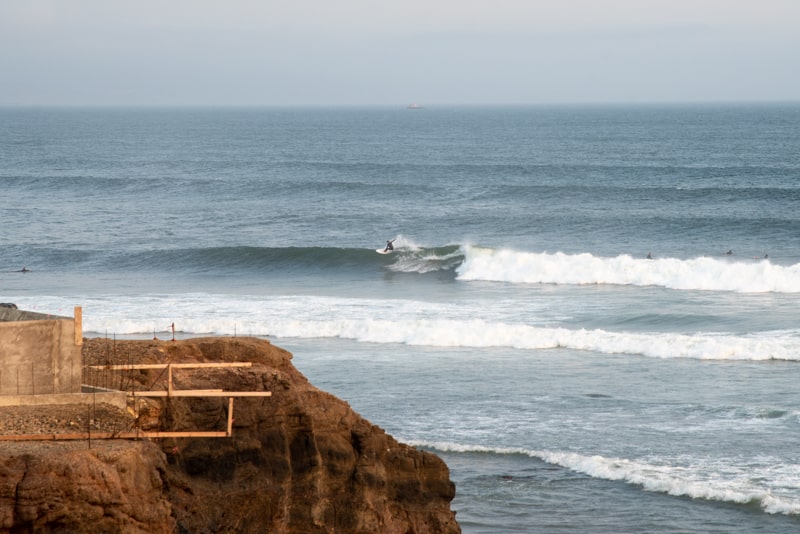
A foreign, rugged, coastal desert located right across the border from San Diego, Baja Norte is the easiest surf trip a Californian can take—simply load up the car, drive across the border, and disappear into the moonscape. With waves ranging from border-town beach breaks and infamous big wave spots to dozens of point breaks that bend raw winter swells into groomed perfection, northern Baja is a wintertime surf fest with something for everyone—as long as you don’t mind cold nights, hot days, and camping in the dust.
Baja Sur
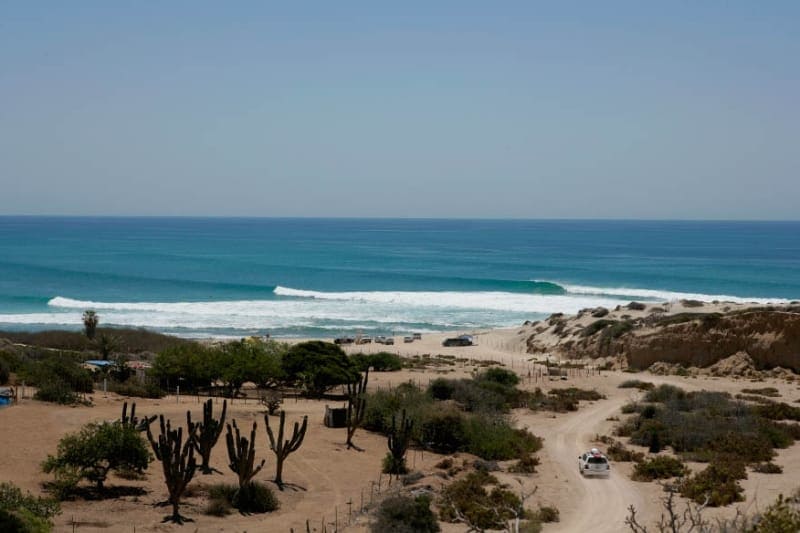
Baja Sur is a lot like Baja Norte, except a little warmer, a little less developed (if that’s possible), and thriving under south swell conditions rather than north. Points, beach breaks, and the occasional reef, all breaking in empty, azure water along a picturesque desert coastline—for those who are willing to drive two days to escape the California crowds.
Puerto Vallarta

Located in central mainland Mexico, with a convenient airport and a ton of accommodation options (including surf camps), the Puerto Vallarta region is home to dozens of user-friendly waves (such as Sayulita and Punta Mita, two of Mexico’s best and mellowest points). Whether you are traveling solo or with family, staying cheap or living in luxury, looking to noseride or racing down the line on a shortboard, the Puerto Vallarta area has it all—Margaritas included.
Check out: Surfing Punta Mita / Our Surf Trip to the Riviera Nayarit
Puerto Escondido
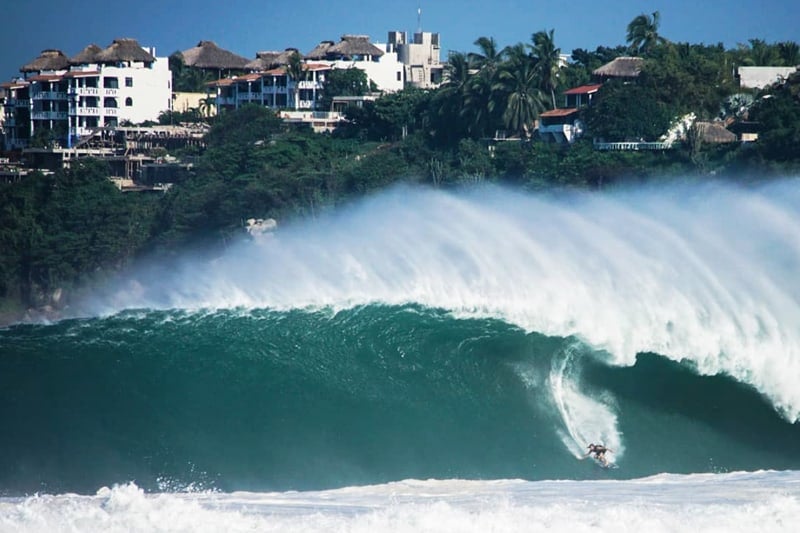
The original big wave beach break, Puerto Escondido’s Playa Zicatela is a heavy, sandy barrel from head high to infinity, which is why it spent a few years on the Big Wave Tour. But the town of Puerto Escondido has more than just oversized kegs on offer. The area’s resort vibe makes it a great place to take the family, the left-hand point break called La Punta is as user-friendly as they come, and there are numerous other waves in the region as well. For a mixed-bag surf experience in a comfy setting—with the option to go as big as you want—Puerto Escondido punches the ticket.
Check out: Puerto Escondido Surf & Travel Guide
Salina Cruz
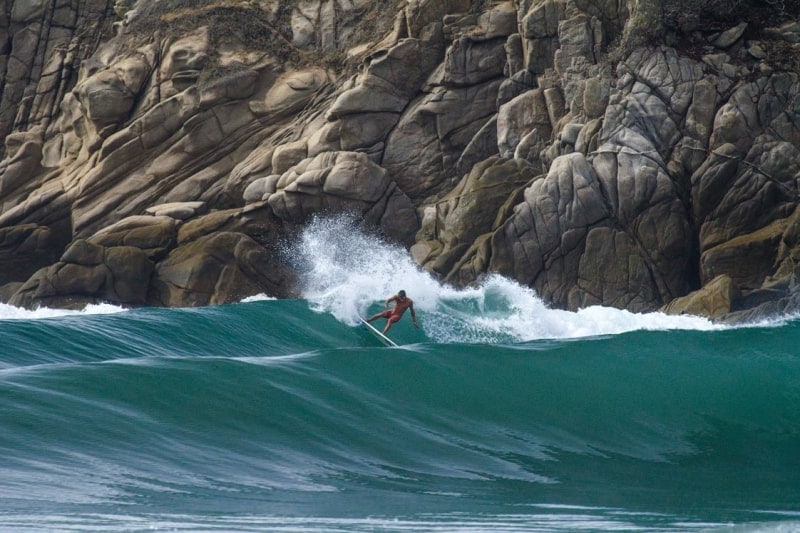
After the world tour exposed the sand-bottom point potential of the Salina Cruz region, it was only a matter of time before it blew up. A decade later, Oaxaca’s most popular surf zone sees a non-stop stream of tourists, most of whom come for the numerous world-class right-handers that peel perfectly from waist high to double overhead.
SURFING MEXICO
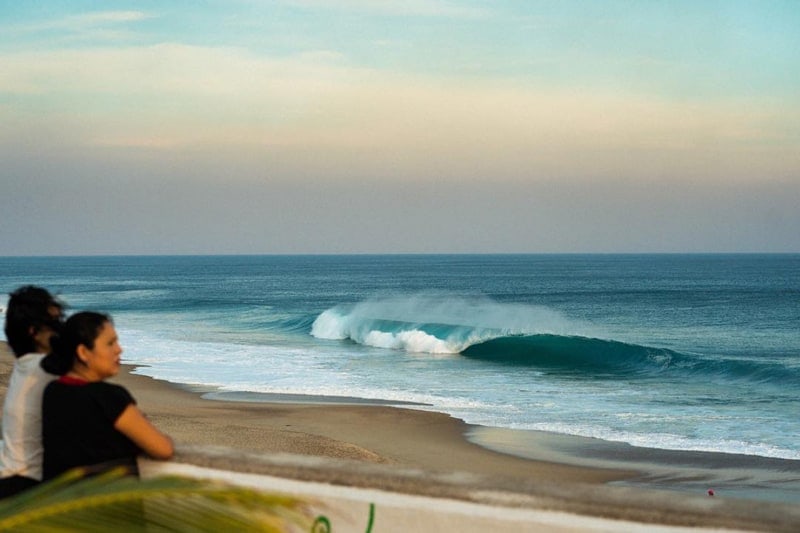
TYPES OF SURF BREAKS: Mexico has just about every type of wave available, from endless point breaks and reef slabs to high-performance beach breaks and big wave spots. Different regions tend to have high concentrations of one specific type of wave, so where you go will depend on what and how you want to surf.
LEVEL OF DIFFICULTY: Depending on where you go, you could surf a mellow point break, some of the world’s heaviest beach breaks, or anything in between.
SEASON AND SWELL INFO: Summer (April through September) tends to have consistent SW swells, with the occasional tropical storm swell mixed in. Winter (October through March) sees the southern regions go a bit flat, but north- and west-facing coasts enjoy consistent W and NW swells out of the north Pacific. Due to Mexico’s central location near the equator, the wind is pretty consistent year round, with light offshores in the mornings and strong sea breezes starting around midday.
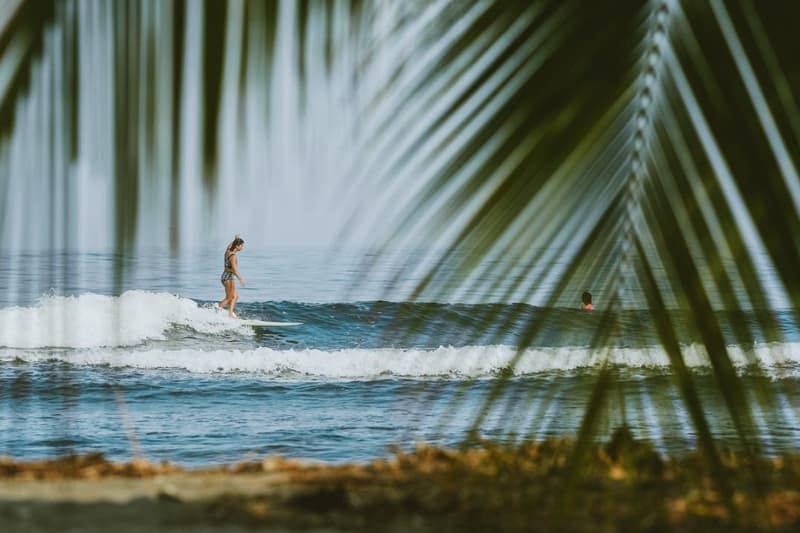
CROWDS: Popular surf zones such as Puerto Escondido, Oaxaca’s point breaks, and the waves around Puerto Vallarta can be extremely crowded. That being said, one of the best things about surfing in Mexico is the huge number of waves available. If you want to surf alone, it doesn’t take much more than a 4×4 vehicle and a bit of an adventurous spirit. Baja, in particular, has over a thousand kilometers of coastline with only a half dozen spots that see surfers on a regular basis.
WATER TEMP BY SEASON: The water in Mexico ranges from freezing in northern Baja during the winter (around 15 Celsius, or 59 Fahrenheit) to downright steamy in mainland Mexico, especially during summer (when water temps can be as high as 30 Celsius or 86 Fahrenheit). Thus, depending on where and when you decide to surf, you could wear anything from board shorts to a 4/3 full suit with hood and booties.
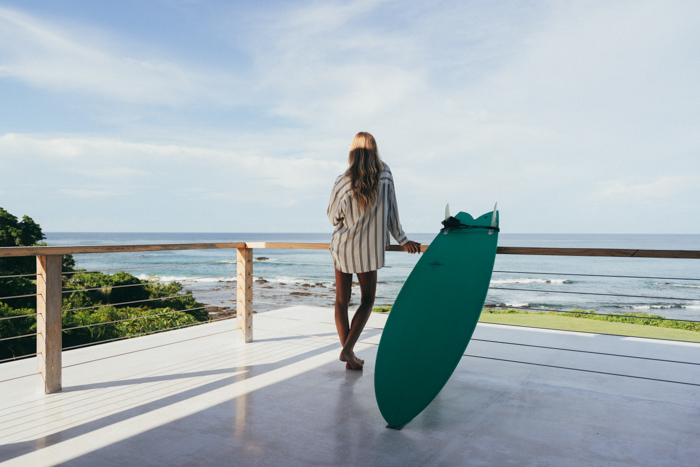
Epic surf trips made easy.
Explore luxury done-for-you surf vacations with Lush Palm Private Retreats.
GETTING TO THE SURF: Mexico is a classic road trip destination. Baja is over a thousand kilometers long and has highways running down both coasts, while mainland Mexico has good road access to most spots, so it is quite easy to be self-supported and search out your own surf zone. That being said, there are surf camps set up through Mexico, and some regions (such as the points in Oaxaca) have local “rules” in place that require you to hire a local guide if you want to surf without being hassled or having your vehicle damaged.
TOP SURF SPOTS IN MEXICO
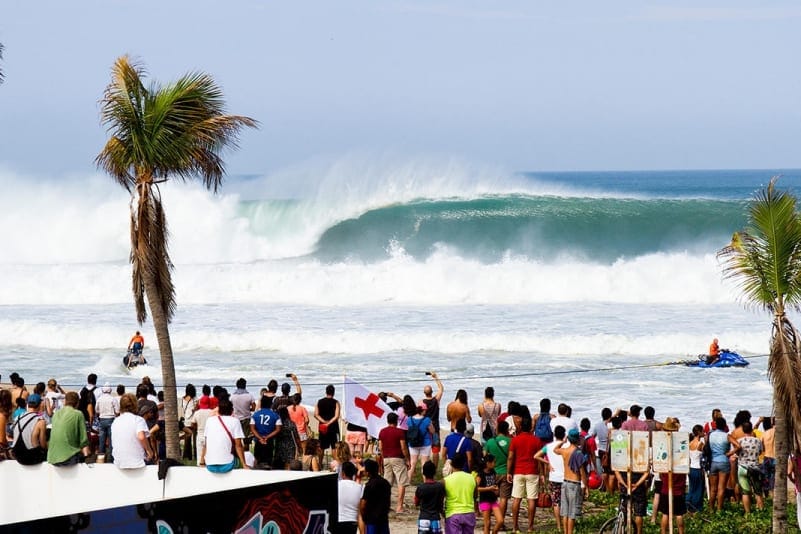
PUERTO ESCONDIDO: One of the heaviest beach breaks on the planet, and formerly a Big Wave Tour stop, Playa Zicatela in Puerto Escondido is a booming barrel from head high to humongous, with the brown, sandy tubes detonating just offshore, right in the middle of town—making for one of the greatest spectacles in surfing.
SAYULITA: A long, mellow, user-friendly right-hand point near Puerto Vallarta, Sayulita is popular with beginners, longboarders, and anyone who enjoys a nice, mellow trim line in warm Mexican water.
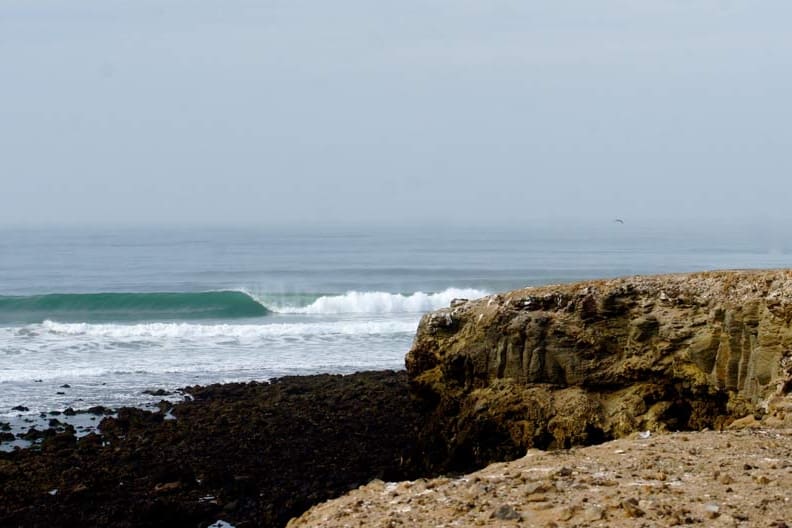
SCORPION BAY: The quintessential Baja discovery, Scorpion Bay is a series of right-hand point breaks that occasionally connect, offering rides of over two minutes. Third Point is the stuff of legends, Second Point is arguably the best noseriding wave in the world, and there are five other points to choose from, depending how much swell is in the water. The only problem is that the zone is quite fickle, requiring a specific swell to break. Also, it’s a 15-hour drive through the desert to get there.
PUNTA CHIVO: One of Salina Cruz’s crown jewels, Punta Chivo is a long, hollow, rippable right-hand sand point that is groomed by the daily sea breezes due to the fact that it bends swell lines into the wind.
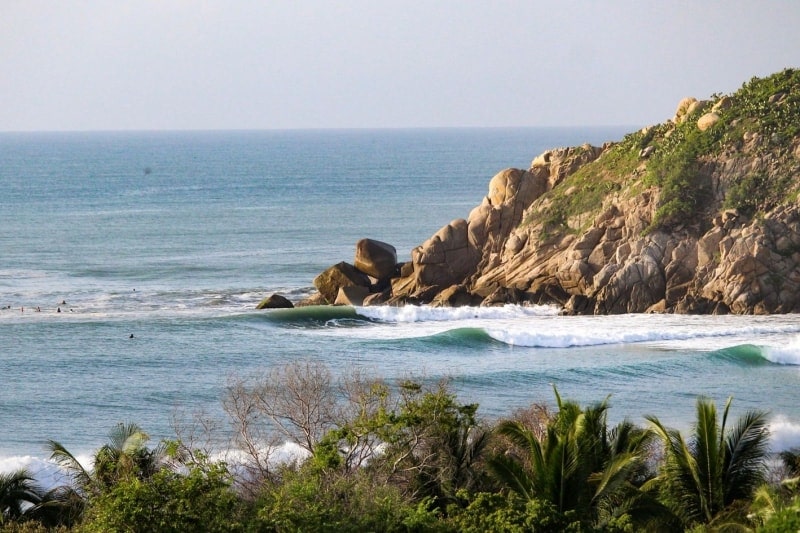
BARRA DE LA CRUZ: The wave that inspired a thousand surf trips, Barra was the site of the 2006 Rip Curl Search world tour event, which scored the wave about as good as it gets, and is considered by many to be the greatest surf contest of all time. Yet another endless, hollow, sand-bottomed right-hand point in Oaxaca (a state littered with them), Barra lost its form for a few years due to development but is rumored to be improving each year now that the development was washed away by the river.
PUNTA CONEJO: Another of Salina Cruz’s classic right-hand sand points, Punta Conejo breaks off a rocky headland and peels along a lengthy sandbar, often for upwards of a kilometer.
CHIPEHUA: One of the only right-hand sand points in the Salina Cruz area that you can surf without a guide, Chipehua is yet another perfect peeler that offers up both barrels and turn sections, with swell often wrapping more than 500 meters.
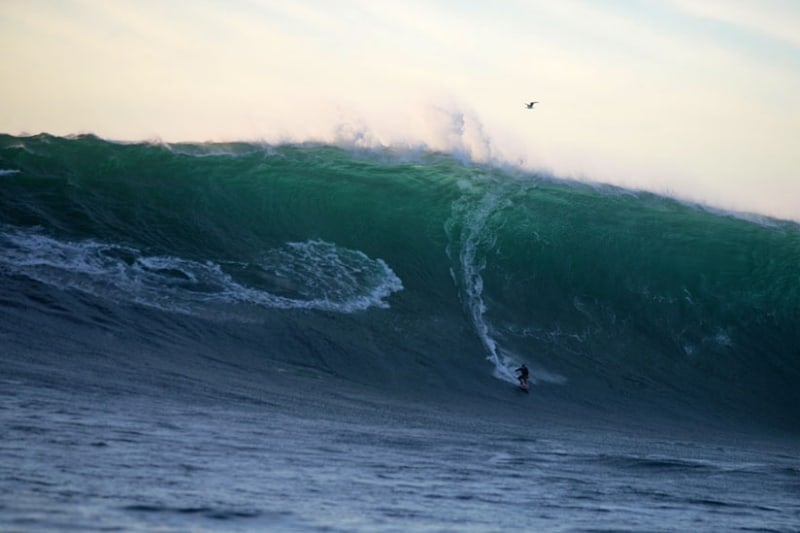
KILLERS: A classic big wave bombie breaking off the island of Todos Santos near Ensenada in Baja Norte, Killers is a huge, heavy, boiled-out right-hander that was formerly a stop on the Big Wave Tour, made famous when Taylor Knox paddled the 50-foot+ K2 wave back in the 1990s, winning himself over $50,000.
SURF TRIP COSTS IN MEXICO
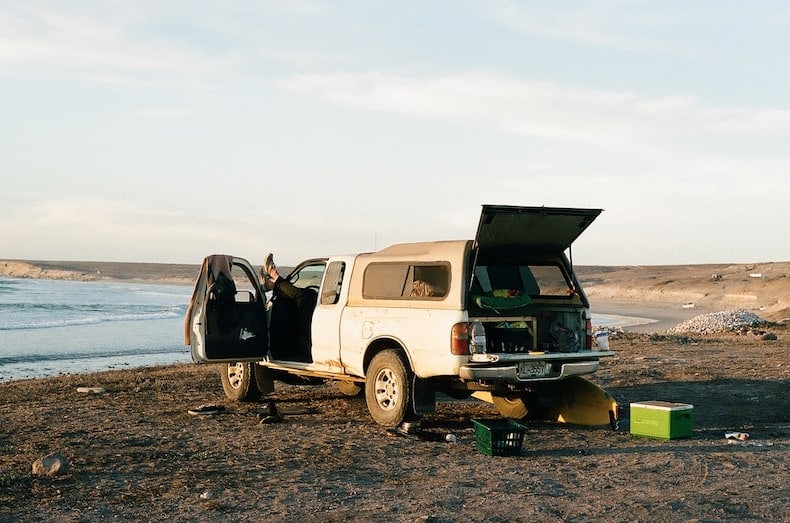
Mexico may be the most varied surf destination in the world. You can drive into the Baja desert and do a completely self-supported, feral surf mission for little more than the cost of gas, eggs, and tortillas, or you can go the fancy-surfer route and check into luxury resorts or private villas and spend and spend anywhere from hundreds to thousands per night depending on the level of luxury and inclusions.
WHERE TO STAY
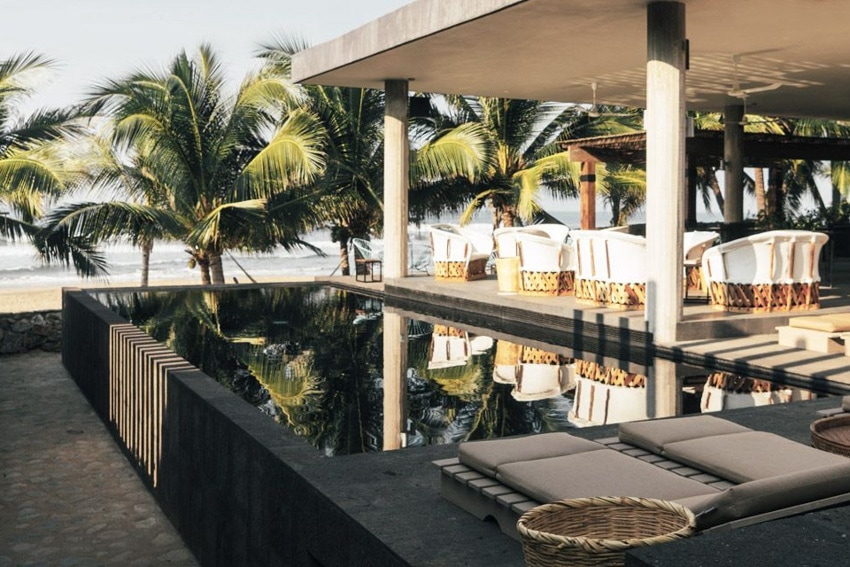
There is a huge range of accommodations in Mexico and your money can go a long way in this department (depending on the area). You’ll find everything from free camping to luxury resorts and everything in between. Generally, the most popular and populated towns and areas will demand the highest prices, and more remote locations will be more budget-friendly. That being said, there are plenty of places to stay for every budget.
At Lush Palm, we specialize in bespoke luxury surf trips to Mexico, tailored to your surf level and preferences. Enjoy a 5-star surf vacation with insider surf intel, the best local surf coaches, stunning oceanfront villas, talented private chefs, surf photography, and more. We’ve vetted and curated the crème de la crème at the best surf hubs in Mexico and bring everything together to create your dream surf getaways. Get in touch here to start planning your trip.
Below is just a few of the many stunning properties we have available for your surf vacation in Mexico. We hand-pick properties based on design, amenities, and proximity to surf breaks.
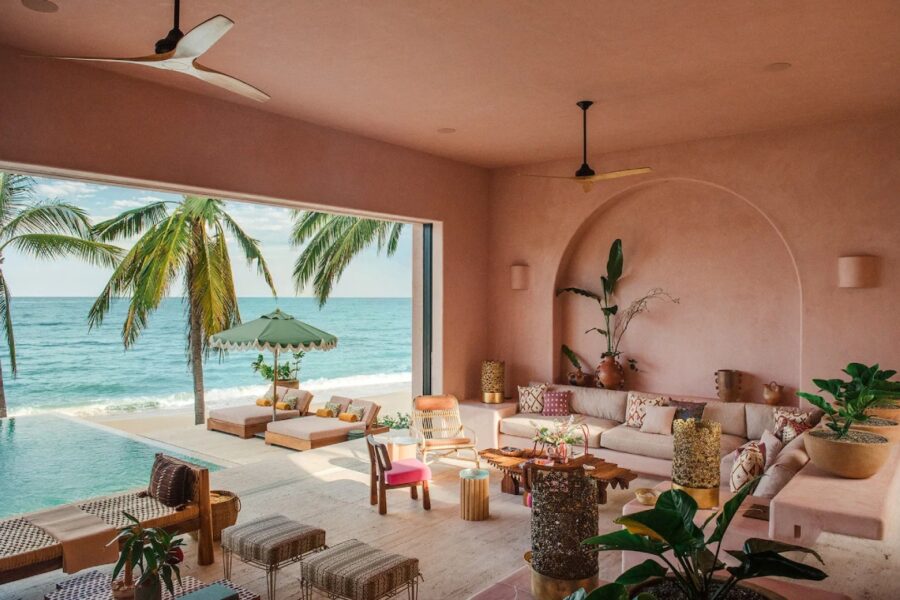
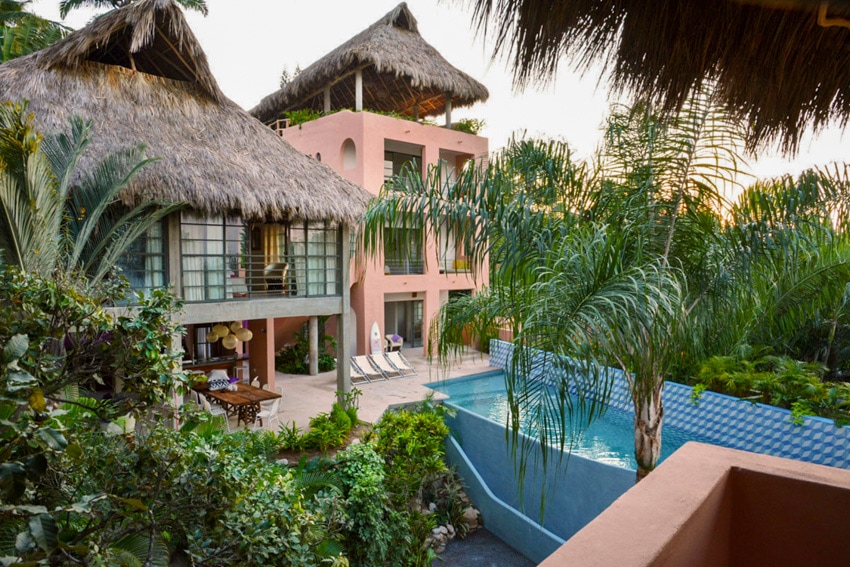
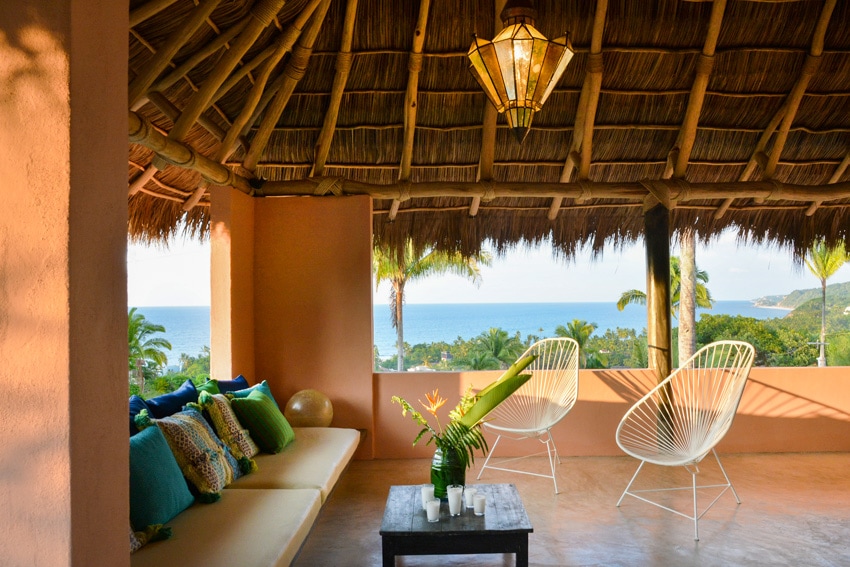
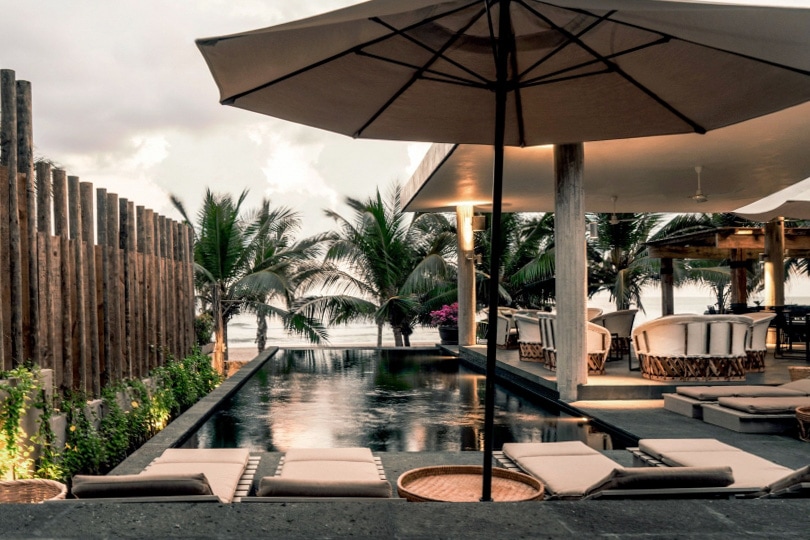
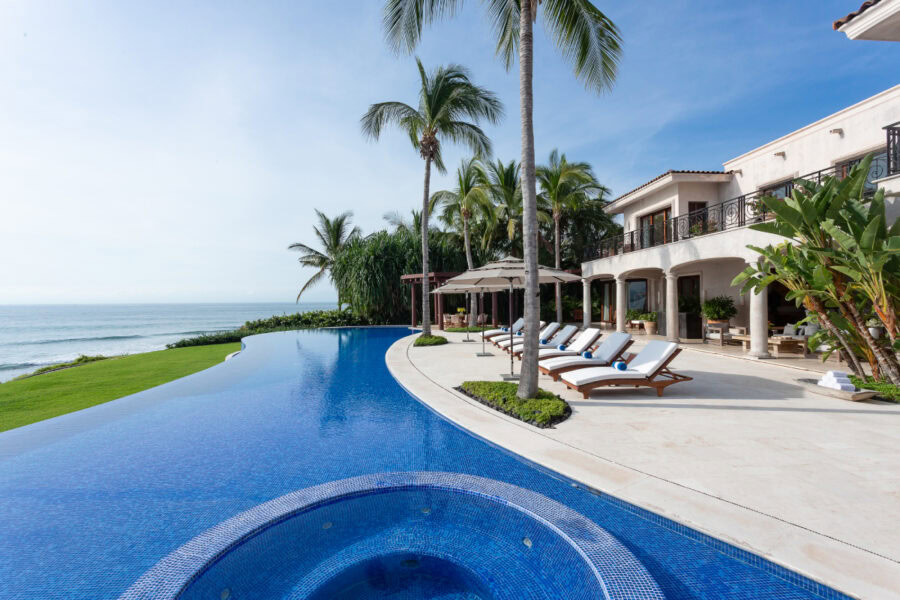
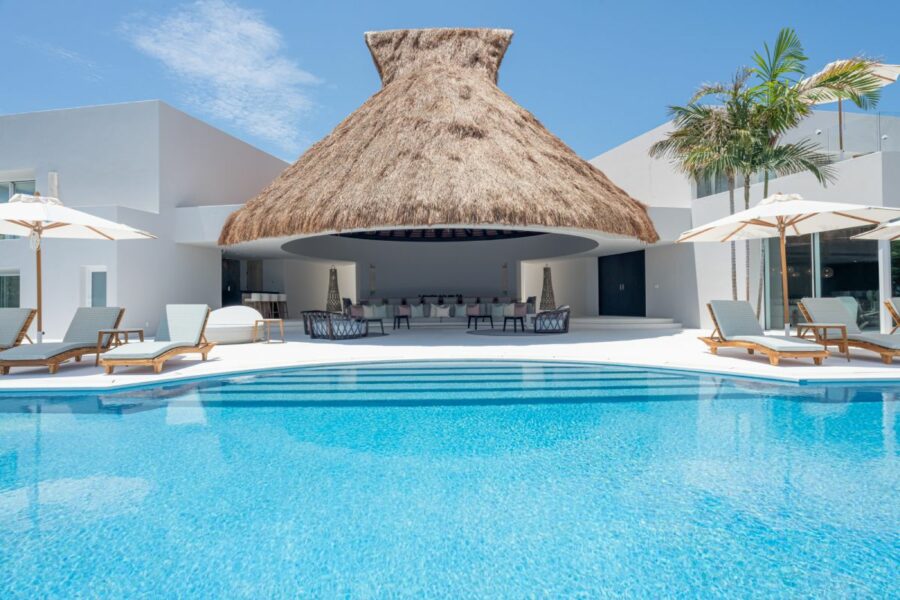

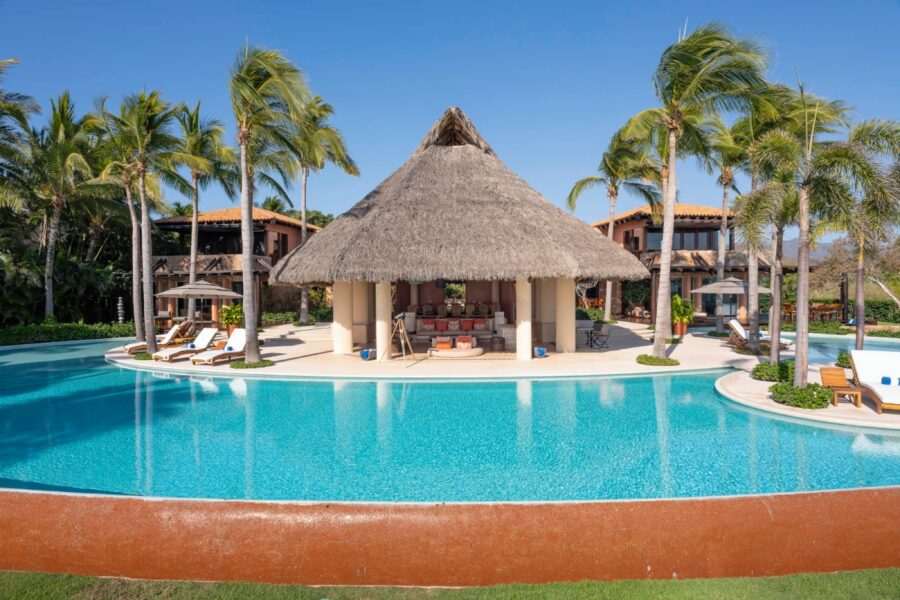
EAT & DRINK
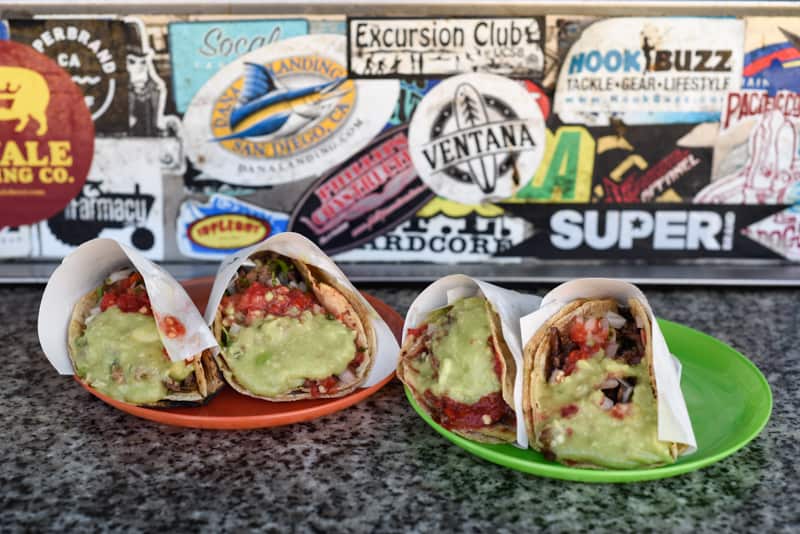
Mexican food is legendary, and for good reason. Burritos, tacos, enchiladas, carne asada, fajitas, tamales, Margaritas, pina coladas, ceviche, and every form of seafood you can imagine—it doesn’t matter who you are, there is something in Mexico for everyone.
- A cheap local restaurant or street food will cost around 100 pesos ($5 USD).
- A mid-range restaurant will cost around 200 to 400 pesos per person ($10 to $20 USD), including a glass or bottle of beer.
- A high-end restaurant could cost anywhere from 500 to 1500 pesos per person ($25 to $80+ USD), depending how fancy you decide to go.
- A can of local beer costs around 40 pesos ($2 USD), and imported beer around 60 pesos ($3 USD).
- An 11-oz bottle of water costs around 20 pesos (around $1 USD), and you typically want to avoid drinking tap water, or eating anything that has been washed in it.
TRAVEL BASICS
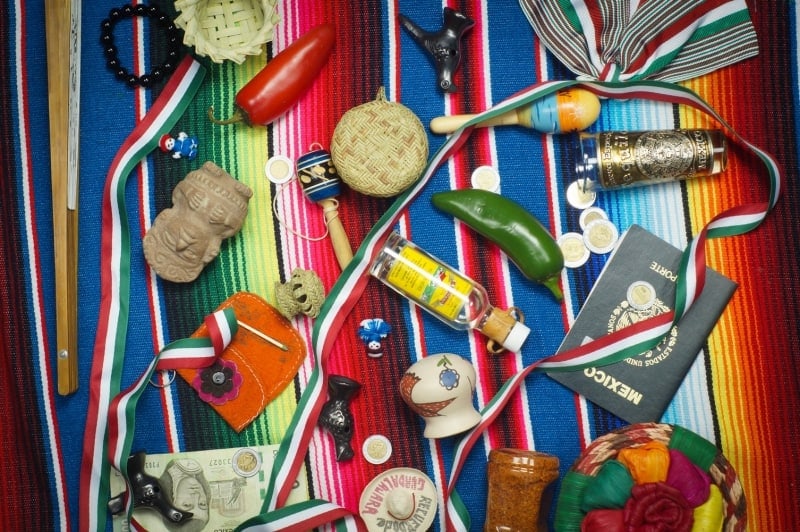
WEATHER: While the majority of Mexico enjoys a hot, humid, tropical climate, Baja is a bit different. The desert peninsula south of California tends to be cold at night and hot during the day—and extremely dry. But regardless if you are in mainland Mexico or Baja, the one thing that holds pretty constant is the wind. Generally speaking, Mexico enjoys glassy to offshore mornings, and then tends to blow out around midday with winds from the NW. The swells for mainland Mexico and Baja are also pretty similar, with consistent, large, long-period south swells during the summer (April through September) and W/NW swells out of the North Pacific during winter (October through March).
CURRENCY: The Mexican peso is the local currency, and is currently exchanged at around 20 pesos to 1 USD, which is quite favorable for visitors. That being said, many of the heavily touristed areas will also accept US dollars.
STAYING CONNECTED: Most towns and cities will have Wi-Fi available, and there is a pretty comprehensive cellular network available throughout the country, provided by companies such as Movistar and Telcel.
LANGUAGE: Spanish is the official language of Mexico, although many service providers in tourist areas will also speak some English. Many people don’t realize that the Spanish spoken throughout Latin America varies slightly from country to country, and is considered to be somewhat unsophisticated by Spanish speakers from Spain. Mexican Spanish is utilitarian and easy-going, and the locals love to speak to you in their language, even if your Spanish is no bueno.
A few common phrases in Spanish:
- Hello: Hola
- Good morning: Buenos dias
- Good afternoon: Buenas tardes
- Good night: Buenas noches
- Goodbye: Adiós
- Please: Por favor
- Thank you: Gracias
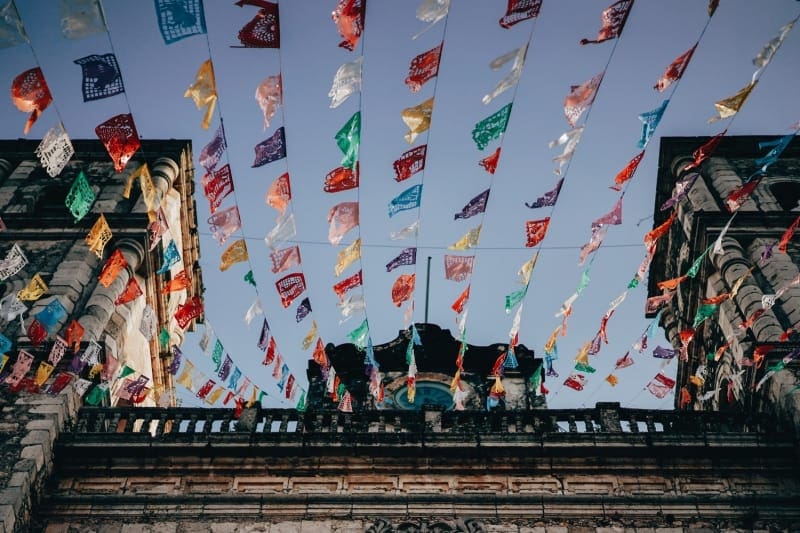
GOOD TO KNOW & LOCAL INSIGHTS:
- Mexico has a reputation of being quite dangerous, particularly in regards to theft and cartel-related violence. Generally speaking, if you keep your nose clean, stay away from drugs and out of border towns, and don’t drive at night or party in seedy areas, you will be fine. That being said, check out the US Department of State Travel Advisory for safety updates and knowledge about safety in different areas. The US gov recommends avoiding certain states altogether due to ongoing cartel violence.
- The recent political atmosphere in the US and Mexico has led to some tension, particularly with Mexicans who feel that the policies of the US government reflect the attitudes of all Americans. But once you break the ice, get to know the locals, and demonstrate that you appreciate them and their culture, they are quite welcoming and friendly.
- Siestas are a big deal in Mexico, which is great if you enjoy an afternoon nap. Of course, if you are looking to get business done between noon and 2 p.m., you may need to invest in some patience.
- Religion is quite important in Mexico, with most locals identifying themselves as Catholic. Many of the local holidays are religious in nature, and most people attend church on Sundays.
- Family is the cornerstone of Mexican culture, and most families are quite large, featuring traditional gender roles. Hosting parties and other social events are a big deal, with the quinceañera (a girl’s 15th birthday party) being one of the biggest. Elders in families are highly respected, and family members tend to support each other in a variety of ways.
TRANSPORTATION
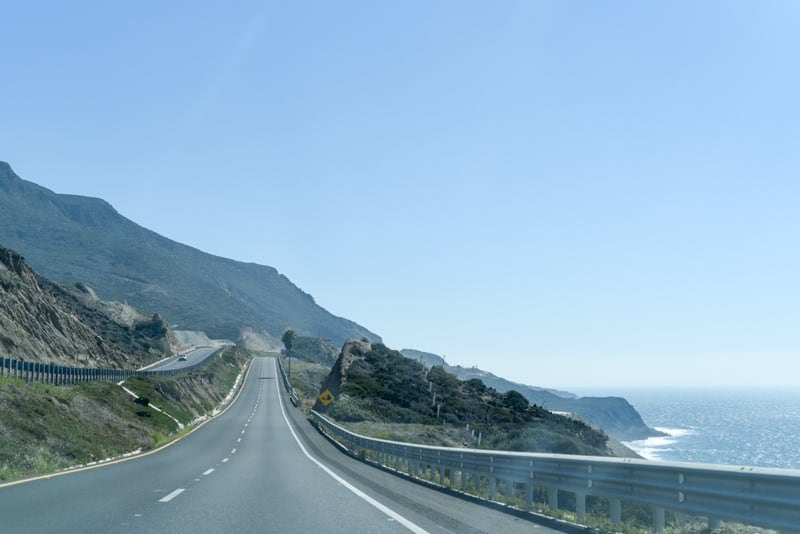
For transportation around Mexico, either drive into Mexico from California or fly in and rent a car. There are great highways throughout Mexico and road access to nearly all of the waves in the country. Mexico has been the classic road trip surf destination for wave riders from the US for decades.
If you’re planning on going to more remote spots in Mexico like Baja, a 4-wheel drive will definitely come in handy. It varies depending on the area you’re driving through, but in general, it’s best to drive during the daytime and avoid driving at night. And be sure to check out the US Department of State Travel Advisory for the safety lowdown in different regions.
Tips for Renting a Car in Mexico
If you’re flying into Mexico, for the most freedom and flexibility on your trip (especially to explore surf breaks), we recommend renting a car. For car rentals in Mexico, we highly recommend SIXT.
Here’s why in a nutshell: In Mexico, there is a mandatory third-party liability insurance for rental cars. Unfortunately, many companies and websites do NOT include this insurance cost in their quote you reserve online, so you could book a great-looking price online (like $5 a day) and end up having to pay an additional $12 – $27+ per day when you pick up your car, which can literally double or quadruple the cost of your rental car. (This is why most car rental companies in Mexico have terrible reviews.)
On our last trip to Mexico, we spent hours researching to try and figure out the accurate and best pricing for car rentals, and SIXT came out the winner. SIXT has clear pricing that includes the mandatory insurance (so there are no surprises), they have the best prices we found, and we ended up renting with them multiple times and had great experiences.
Travel Insurance
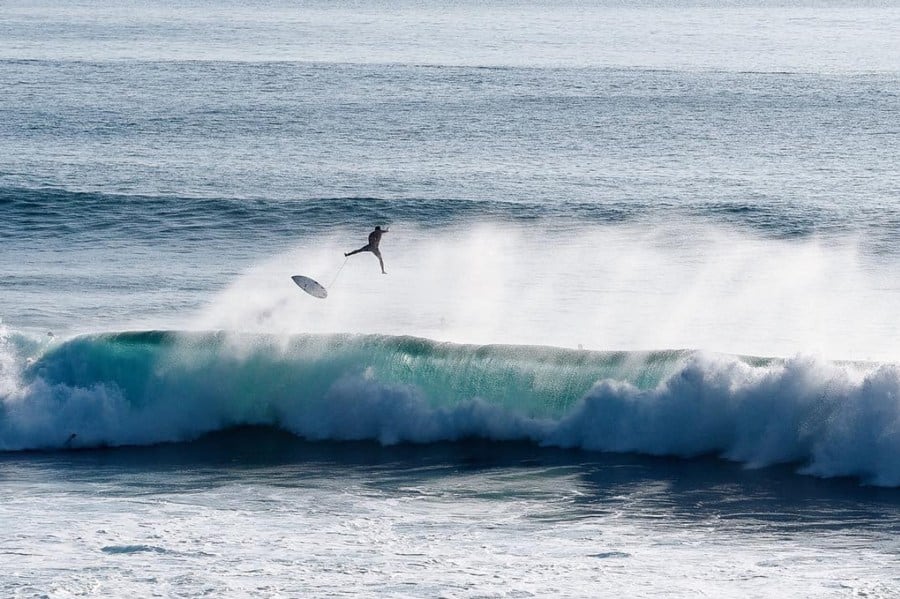
While we’d all rather not think about getting injured, there are too many cases of people who didn’t think about insurance and get nailed with crazy medical bills after the matter.
That being the case, many hotels and surf properties actually require that you have approved travel insurance in case of a serious inquiry or trip cancellation, especially in the wake of COVID.
You know the deal—better safe than sorry. We recommend Battleface or World Nomads Insurance. Both companies offer very comprehensive travel insurance and cover heaps of activities, including surfing and ocean sports. You can easily check them out and get a fast quote below.
Get a Battleface Insurance Quote >>
Get a World Nomads Insurance Quote >>

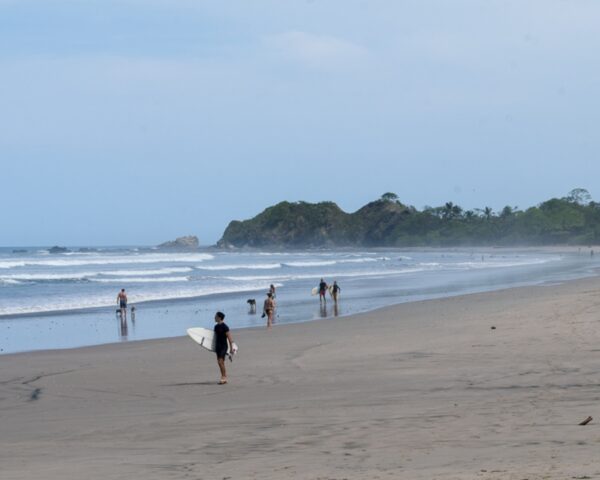


As a beach comber and surfing enthusiast I love ❤️ surfing Mexico and find the people very friendly and many of he women very amorous. And I’m not talking about bar girls.
I am a longboard we, surf a 9ft-9’6. I’m thinking of going on a little surf trip to Mexico for my bday in mid January. I’ve already been to Sayulita and Nayarit a couple times so want to try something different.
I want to go to Oaxaca (salinas cruz: punta chivo, barra, Puerto Escondido, Zicatela, Agustinillo) and/or Guerrero (Troncones Point, Saladita).
Would these spots (or which of these spots) would be best for longboarding in January? I remember going to Sayulita & PV for my bday a couple years ago and the waves were so huge & strong we couldn’t surf or barely just go in the water.
how would the water be in Oaxaca / Guerrero in January?
Great article, thank you! I’m reading it as I head back to the states after a road trip along the Baja Peninsula the last few months. I picked up surfing in the Costa Azul region by Los Cabos and I’m hooked! I want to come back to Mexico in the winter and wondering if you can recommend a beginner – intermediate spot that breaks during winter months? (Baja or mainland)
Hi Tami, awesome! Yeah, you should check out the Sayulita/Punta de Mita area. It’s a great beginner to intermediate region that breaks during winter months. Check back on Lush Palm as we’ll be updating some of our guides to the surrounding areas soon. Cheers
Love this article! I actually wrote a similar article about mexico!:)
What a pleasant surprise to find such an awesome blog! Just the information I needed to plan my 40th Birthday trip!
Awesome, thanks for sharing. Happy 40th and wishing you an amazing trip! 🙂